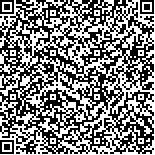| 摘要: |
| 大黄鱼是我国最重要的海洋经济鱼类之一。已往对于它的食性虽有过一些记载,但由于取材一般局限于摄食显著减弱的生殖季节,不能揭示食谱的全貌;关于摄食的季节变化的研究,则尚未见有比较详细的报导。而这两个问题,对阐明大黄鱼数量和行动均具有重要意义。为此,本文根据浙江、江苏近海所得的周年性和季节性资料,就上述问题作一分析。
本文是在导师张孝威教授的指导下完成的;李和平同志参加过资料的搜集和统计工作;成庆泰、刘瑞玉副教授以及王存信、王永泉、高尚武和孙宝龄等同志曾对胃含物中某些种类作仔细鉴定;郑重教授及山东海洋学院李冠国先生曾提供宝贵的意见;此外,浙江省动物研究室董聿茂教授亦曾对浙江一些虾类标本的鉴定予以协助。在此一井致谢。 |
| 关键词: 大黄鱼 食性 季节变化 |
| DOI: |
| 分类号: |
| 基金项目:中国科学院海洋研究所调查研究报告第182号 |
|
| FEEDING HABIT AND SEASINAL VARIATION OF THE FOOD CONTENTS OF THE LARGE YELLOW CROAKER, PSEUDOSCIAENA CROCEA (RICHARDSON), OFF CHEKIANG AND KIANGSU |
|
Yang Ji-Ming, Zheng Yan
|
|
Institute of Oceanology, Academia Sinica
|
| Abstract: |
| The aim of the present investigation is to study the feeding habit and seasonal variation of the food contents of the Large Yellow Croaker. Altogether 1,767 stomachs of the adult specimens, 20-52.5 cm in standard length, collected off Chekiang and Kiangsu in 1958 to 1961 have been studied. The results are as follows:
The Large Yellow Croaker is a predatory fish with a more mixed diet. It takes nearly hundred species of animals, mainly small fishes (including young fishes), shrimps, mantis shrimps and crabs, of which the following 20 species of fishes (with *) and crustaceans are of great importance, namely, Harpodon nehereus*, Squilla oratoria, Harengula nymphaea*, Johnius belengerii*,Pseudosciaena polyactis*,P. crocea* (young fish) , Acetes chinensis, Leptochela gracilis, Solenocera sinensis, Parapenaeopsis hardwickii, Coilia ectenes*, C. mystus*, Collichthys niveatus*,C. lucidus*,Chaeturichthys hexanema*, Myctophum pterotum*, Xenophthalmus pinnotheroides, Squilla inornata, and Palaemon (Palaemon) gravieri. The majority of these animals are widely distributed and found abundantly in the area where the specimens were collected. The advantages of its feeding habit and of the abundant food supply seem favourable to the increase and stability of the population of the fish. However, its predacious nature should have direct inf1uence upon the population of the young fishes of several important species.
The feeding intensity of this fish reaches its peak in the autumn and is very low during the spawning seasons, and it stil1 takes much food during the winter. However, the feeding intensity is rather even all the year around, as compared with some northern species of food fishes. [19, 21] Based upon the seasonal variation of the feeding intensity, the annual feeding cycle may be divided into two main phases: low feeding intensity during the spawning seasons, and high feeding intensity during the rest of the year. According to the period of appearance, the food contents can be divided into three categories: 1) those taken constantly, 2) those taken intermittently, and 3) those taken incidentally. The food contents are subject to great seasonal variations, and there occur two periods of maximum change in the composition of diet, one in spring and other in autumn. Further more, the items of food are greatly enlarged during the summer and autumn, while the size of food organisms is larger in winter and spring. Such seasonal changes indicate that the relationship between the need and availabi1ity of the food is rather complicated.
According to the data on growth [12] of this fish, the growth rate in the summer is equal to that in the autumn or even higher. The results of food analysis, however, show that the feeding intensity is higher in the autumn than in the summer, as the index of fullness (21.3?) in the summer is only about one third of that in the autumn. It is interesting to note that the stomach contents in the summer season consisted mainly of the young fishes of Sciaenidae (30% in weight), while those in the autumn mainly the animals of poor quality such as Harpodon nehereus and Squilla oratoria (35.3 % in weight). Therefore, the relation between the quality of the food and the seasonal growth of the fish is obvious. |
| Key words: the Large Yellow Croaker feeding habit seasonal variation |


